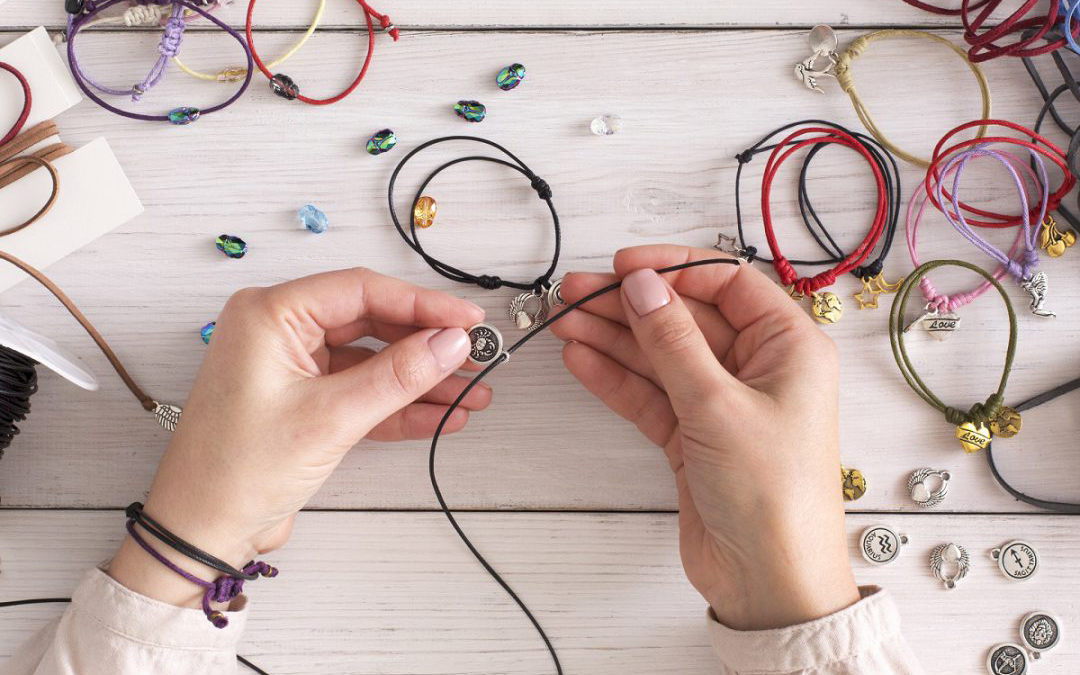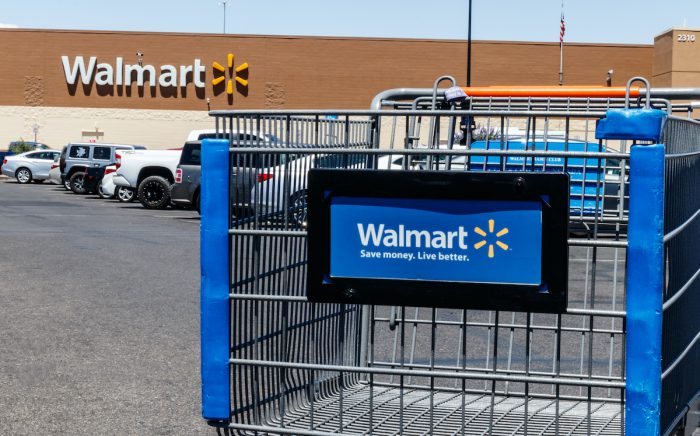Table of Contents
Home to handmade goods and adorable custom swag, Etsy has gained a huge following in recent years. With more and more artists and entrepreneurs selling their work online, the number of small businesses on the market offering homemade goods has skyrocketed—and Etsy is one of the most popular platforms these sellers use.
But a new site has entered the arena of handmade goods—and this site is no stranger to E-commerce.
Amazon Handmade is a website similar to Etsy and arrives on the scene as one of the latest ventures from—what else?—Amazon. Amazon Handmade is a new branch of the original ecommerce marketplace, specializing in artisan crafted items, rather than mass-produced goods.
If you’re new to the world of online selling, and you want to know which platform will make a better home for your small business—you’ve come to the right place. Whether you want to sell handmade jewelry or adorable custom aprons, continue reading for everything you need to know about the selling benefits on Amazon Handmade vs. Etsy!
Amazon Handmade vs Etsy Products
Both companies provide a platform for artisans to sell their homemade work. That means the products you sell must be clearly crafted with care by a small business or single artist. While both Etsy or Amazon Handmade share that criteria, the more specific rules and restrictions regarding eligible products differ quite a bit between the two websites.
The products you can sell on Amazon handmade must fall into one of these categories:
- Accessories, jewelry, and watches
- Artwork
- Baby
- Beauty & personal care
- Clothing, shoes, and handbags
- Home, kitchen & dining, and outdoor care
- Pet supplies
- Sporting goods
- Stationery & party supplies
- Toys & games
If your product doesn’t fit into one of Amazon Handmade’s categories, Amazon Handmade’s seller policy clearly states that you will not be approved for selling. This leaves some creators in a sticky situation if their product doesn’t clearly fit into one of these categories.
Etsy, on the other hand, lends sellers a broader selection of categories to choose from. The basic Etsy categories are as follows:
- Accessories, bags, jewelry, and purses
- Art and collectibles
- Bath and beauty
- Clothing and shoes
- Craft supplies and tools
- Electronics and accessories
- Home and living
- Paper and party supplies
- Pet supplies
- Toys and games
- Wedding
While this may appear similar to Amazon Handmade’s category system, the difference lies in the details.
Under each of these categories, Etsy lists hundreds of subcategories that go on for pages. Anything you’re selling, Etsy most likely has a subcategory for it. This makes the approval process for products more lenient on Etsy than Amazon Handmade, and allows sellers more creative freedom with their work.
The Bottom Line – the Amazon Handmade marketplace is stricter about what products you can sell, while Etsy seems to have a shop for nearly everything. Etsy is the better choice.
Can’t get approval for your item on Amazon Handmade? Check out our guide on Ebay vs Amazon for a comparison of seller benefits!
Etsy vs Amazon Handmade Fees

You have to spend money to make money—that saying applies to business and selling handmade items online.
What many people don’t know about becoming an online seller is that the job title comes along with a large number of fees. From your first listing to your final transaction, most E-commerce platforms tend to charge creators money for using their company every step of the way. While you can’t avoid fees entirely in this line of work, you can determine which marketplace site is going to charge more reasonable fees that work for you and your business.
Amazon Handmade allows sellers to list their products on the platform for free. This may seem like a surprisingly good deal, but don’t be fooled. Amazon Handmade makes up for not charging a listing fee by hiking up the fee rate on final sales. Once a transaction is made, Amazon Handmade takes a 15% referral fee out of the final sale price. If you’re selling an expensive item, that percentage could potentially do some damage to your overall profits.
Etsy handles seller fees a little differently. The company charges sellers a $0.20 listing fee upon putting new products on the platform. When you restock pre-existing items, no additional fee is deducted. That being said, renewing listings is different from restocking. Listings are available for periods of four months at a time. At the end of each listing period, a renewal fee (still $0.20) is once again charged to the seller’s account.
When an Etsy seller makes a sale, a 5% transaction fee is deducted from the total price—shipping and gift wrapping charges included. This transaction fee is not calculated into the price post-sales tax unless a seller calculates tax into the price displayed on their listing.
Etsy Plus Fees
In addition to the regular fees Etsy charges sellers, there are further benefits sellers can choose to pay for. A standard Etsy account is free to use, however, some sellers choose to opt for an Etsy Plus account for additional benefits. Etsy Plus costs $10 a month to maintain, and provides sellers with:
- 15 listing credits
- $5 in advertising credits
- Free “.store” domain registration
- 50% off “.com” “.net” and “.ca” domain registrations
Some sellers believe an Etsy Plus account is worth the money, while others choose to forgo the added expense. Either way, this fee is not necessary and doesn’t count against Etsy in the race for the better selling platform.
The Bottom Line – Etsy has more types of fees, but not all of them are required. Amazon Handmade doesn’t charge sellers for listing their products, but they do have a much higher final sale fee.
Shipping with Amazon Handmade vs Etsy
As an online merchant, shipping is a huge factor you should consider prior to choosing a platform. Your preferred shipping method and the level of assistance you want from your platform will help determine whether Etsy or Amazon Handmade provide a better service for your business.
Amazon Handmade Shipping

Amazon—Amazon Handmade’s big brother—is known for its innovative shipping techniques. Handmade is no different in this department. While many Amazon Handmade sellers choose to fulfill their own shipping and calculate shipping costs into their listing price, others opt for help through Amazon Prime.
That’s right, Prime is available to Amazon Handmade sellers.
Here’s what you need to know about using Prime with Amazon Handmade:
- Verification – To receive the benefits of Prime, sellers must go through a verification process. This may take a couple days, but once it’s completed you’ll be reaping the benefits.
- Increased visibility – Prime sellers typically receive a lot more traffic on their page once they become verified.
- Shipping made easy – The best part of becoming a Prime seller is the shipping benefits. Prime sellers on Amazon Handmade must purchase shipping labels directly through Amazon’s shipping portal. While this costs money, shipping large items yourself will as well—so it may be worth it to take advantage of this Amazon Handmade feature.
Etsy Shipping
Etsy’s shipping is similar to Amazon Handmade’s—but with some financial differences.
- Required shipping services – Etsy requires sellers to use FedEx and UPS to fulfill their orders.
- Discounted shipping labels – Like with Amazon Handmade, Etsy sellers are required to purchase their own shipping labels for their packages—fortunately, however, up to 30% of the label cost can be discounted through Etsy’s resources. This is an added bonus of using Etsy that Amazon Handmade doesn’t offer.
- Keeping track of tracking info – Etsy sellers are also responsible for updating their own tracking information for customers.
While Etsy does provide discounts on shipping labels, it seems as though sellers have greater independence and responsibility for shipping out their order. While this may put some sellers at ease, it also requires more work.
The Bottom Line – Etsy gives sellers more freedom to ship their items themselves, while Amazon Handmade offers a bit more assistance—especially if you’re Prime verified.
Etsy vs Amazon Visibility
Beyond the technical details of each platform, most sellers also value the visibility factor they’ll gain from using one website over another. For small business owners, getting your name out there is vital to making a profit.
If you’re looking to make the front page of your platform of choice, here’s what you’ll need to do.
Amazon Handmade Visibility
Amazon’s search engine relies heavily on keywords. If you seek to increase your visibility on Amazon Handmade, you’ll need to incorporate as many keywords and carefully strung together phrases as possible into your description.
Amazon Handmade also differs from the regular Amazon marketplace in terms of visuals. Photos of your handcrafted items are not required to have the standard white background as regular Amazon products, however, you should still make a point to provide high quality, clear images so customers know what they’re buying.
Another way to draw customers to your page is by customizing it. Amazon Handmade allows sellers to personalize their profile far more than a regular Amazon store. This will help customers get a better idea of who you are and what you’re selling.
Lastly, Amazon takes customer reviews seriously. If you want to make the first page of a shopper’s search results—or even remain an Amazon seller, altogether—you must provide the best customer service possible to avoid any negative reviews that could impact your visibility and success.
Etsy Visibility
Getting to the Etsy front page is a bit more complicated. Etsy listings allow for more details, so it’s important that sellers fill out these fields as thoroughly as possible to increase the visibility of their store.
Etsy offers merchandising reports that can help sellers follow trends and see what’s currently popular on the site. This can help creators boost the visibility of their Etsy shop and even potentially become a feature on the front page if they play their cards right and incorporate certain themes into their store.
The Bottom Line – Amazon is very search engine optimization based, while Etsy requires a more stylistic touch to increase popularity.
Amazon Handmade vs Etsy Payment Methods
If you’re running a business, what’s more important than getting paid? The way you prefer to handle transactions and receive payment will make a world of difference in deciding between Amazon Handmade and Etsy.
Etsy Payment Options
Etsy offers a wide variety of payment processing options for both customers and sellers. Sellers are able to choose between handling payments on their own or registering for Etsy Payments. Etsy Payments is a service that assists users in making transactions through the Etsy website. Eligible payment methods on Etsy include:
- Credit and debit cards
- Etsy gift cards
- Etsy credit cards
- Apple, Google, and Android Pay
- PayPal
- Select bank transfers
Amazon Handmade Payment Options
Amazon Handmade takes a more hands-on approach with sellers’ transactions. Payments are not reflected in the seller’s account until the item has been marked as shipped. Those funds can then be transferred to your bank account a minimum of 7 days after the latest possible delivery date. This means that it will then take another few days after transfer for the funds to actually show up in your bank account. That’s a long time to wait for your money!
The Bottom Line – Amazon Handmade’s payment processing takes much longer to pay sellers than Etsy.
Etsy vs. Amazon Handmade: Which is Better?
Now that you’re familiar with the specifics of each platform, it’s time to decide whether Etsy or Amazon Handmade will be a better place to grow your small business.
The best online marketplace is ultimately going to depend on your specific needs. For sellers who want fast shipping, room to grow without listing fees, and the reliability that comes with using a well-known retailer—Amazon Handmade is going to be your best bet.
For the more unique seller who values freedom, flexibility, and being surrounded by a tight-knit artistic community—Etsy is the platform that will provide you with the best experience.
The Bottom Line – Each company has its own set of pros and cons, it just depends on which type of online store you feel most comfortable using.
RebateKey Can Boost Your Listings
Whether you’re an Amazon Handmade artisan or an independent Etsy merchant, RebateKey can help promote your business.
RebateKey is a hub for all things shopping and saving. If you’re selling unique, affordable products, RebateKey is a great way to advertise your listings to potential customers. You can offer an Amazon rebate or Etsy discount code to shoppers to help increase traffic to your online store, through our sellers platform. Have fun, and happy selling!




